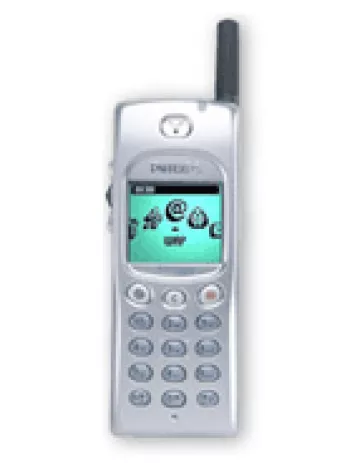
Overview of Philips W8510
The Philips W8510 was launched in October 2013, marking an entry into the competitive smartphone market of that time. Despite being discontinued, it still holds relevance for technology enthusiasts and collectors. This smartphone offers a blend of basic functionality with features that were considered advanced for its time.
Network Capabilities
The Philips W8510 supports GSM and HSPA network technologies, providing adequate connectivity options for mobile communications. It supports both 2G and 3G bands:
- 2G bands: GSM 900 / 1800 / 1900 - SIM 1 & SIM 2
- 3G bands: HSDPA 900 / 2100
The device offers data speed capabilities of up to HSPA 42.2/5.76 Mbps, sufficient for browsing and streaming on 3G networks.
Design and Build
The physical design of the Philips W8510 combines functionality and simplicity. Its dimensions are 138.5 x 69.7 x 10.4 mm, which gives it a fairly compact and manageable profile. With a weight of 173 grams, it offers a solid feel in hand. The phone is equipped with a Dual SIM feature, using Mini-SIM cards and supporting dual stand-by.
Display Features
The device boasts a 4.7-inch TFT display, offering a reasonable screen-to-body ratio of approximately 63.1%. The resolution stands at 720 x 1280 pixels with a pixel density of about 312 ppi, providing clear and sharp visuals suitable for viewing images and videos.
Platform and Performance
The Philips W8510 runs on Android 4.2 Jelly Bean. It is powered by a Mediatek MT6589 chipset built on the 28 nm process. The central processing unit is a quad-core Cortex-A7 clocked at 1.2 GHz, accompanied by a PowerVR SGX544 GPU. This configuration ensures a smooth performance for everyday tasks and moderate multitasking.
Memory and Storage
The internal storage capacity of the device is 4GB, which may seem limited by today's standards. However, it supports memory expansion via a dedicated microSDHC slot, allowing users to increase storage as per their needs.
Camera Specifications
The Philips W8510 is equipped with an 8 MP autofocus rear camera, capable of capturing high-quality images with the support of an LED flash. It can also record video, although the exact resolution is unspecified. For selfies, the device includes a front-facing camera, providing basic functionality for video calls and self-portraits.
Audio and Connectivity
The audio setup incorporates a loudspeaker and a 3.5 mm headphone jack, ensuring compatibility with most audio accessories. Connectivity options are diverse, featuring:
- Wi-Fi 802.11 b/g for wireless internet access
- Bluetooth 4.0 with A2DP and LE for efficient wireless communication
- GPS positioning for navigation needs
- MicroUSB 2.0 port for charging and data transfer
However, the device does not support NFC or have a built-in radio receiver.
Sensors and Battery Life
Two primary sensors are incorporated: an accelerometer and a proximity sensor, catering to basic user interaction and functionality. The battery is a significant feature of the Philips W8510, boasting a removable Li-Ion 3300 mAh capacity. This ensures an extended battery life with stand-by time up to 860 hours and talk time up to 18 hours.
Color Options and Conclusion
The Philips W8510 was available in a sleek gray color, adding a touch of elegance to its practical design. Overall, the Philips W8510 represented a well-rounded option for users seeking a device that delivered capable performance and reliability. Although technology has vastly progressed since its release, this smartphone remains a nostalgic piece for technology history enthusiasts.
Key Features of Philips W8510
- Supports Dual SIM (Mini-SIM, dual stand-by) functionality for enhanced connectivity options.
- Features a 4.7-inch display with a resolution of 720 x 1280 pixels, offering a decent pixel density of approximately 312 ppi.
- Powered by a Quad-core 1.2 GHz Cortex-A7 processor and Mediatek MT6589 chipset, ensuring reliable performance for everyday tasks.
- Integrated with 8 MP main camera featuring autofocus and LED flash, enabling quality photo capturing.
- Equipped with a removable Li-Ion 3300 mAh battery offering long stand-by time of up to 860 hours and talk time of up to 18 hours.
- Comes with Android 4.2 (Jelly Bean) operating system, providing a user-friendly interface.
- Supports external storage via microSDHC card slot, allowing expansion of storage capacity.
- Includes standard 3.5mm audio jack and loudspeaker for audio accessibility.
- Bluetooth 4.0 with A2DP and LE, along with Wi-Fi 802.11 b/g for connectivity options.
- Features essential sensors like accelerometer and proximity sensor.
Philips W8510 Disadvantages
- Discontinued model, which may limit support and availability of parts.
- Limited internal storage of 4GB, may require frequent reliance on microSD card for expansion.
- No NFC support, limiting modern payment options and data transfer capabilities.
- Lack of radio, which may be a drawback for users who prefer listening to FM stations.
- Uses older Android 4.2 (Jelly Bean) OS, which may not support modern apps and updates.
- TFT display technology, which may not provide the best viewing angles or color reproduction compared to modern screens.
- Bulky dimensions and weight at 173 g, which may not be comfortable for all users.
- Low screen-to-body ratio (~63.1%), resulting in less screen real estate compared to modern smartphones.
- Basic chipset performance with Mediatek MT6589 (28 nm) and Quad-core 1.2 GHz Cortex-A7, which may not handle demanding applications well.
- Lacks advanced sensors such as fingerprint or gyroscope, limiting functionality.


View Also
More Phones
All Rights Reserved +14266 Phones © Mobilawy 2025

























